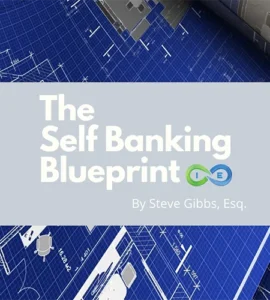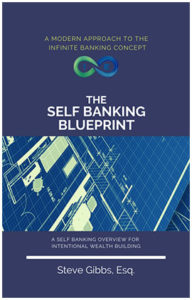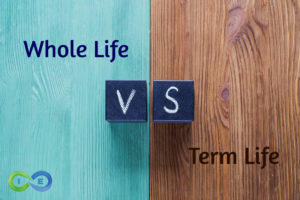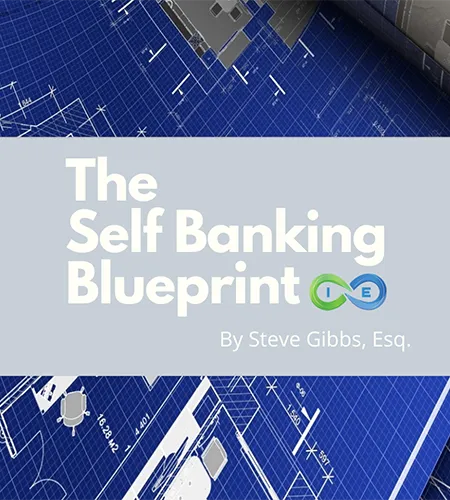Most of us have a sense that our lives have inherent value. I attribute this, at least in part, to the culture of life that is part of our heritage as Americans. However, how often do we consider what the value of our life is or that of others? Perhaps we assume that this is intangible or the the value of a human life cannot be quantified.
Interestingly, life insurance companies would beg to differ, because quantifying human life value is something they do on a regular basis and with a high level of sophistication. Truly, life insurance and human life value are interdependent concepts.
And the concept of the human life value approach is a useful segue into other deeper purposes than just arriving at a calculation for life insurance purposes.
For example, how often do we really consider the value of our human life and whether we are living up to that value? These questions and more are considered in this article.
Table of Contents
- What is Human Life Value?
- Human Life Value Calculation
- Human Life Value Approach & Living Your Life Insurance
- Taking Back Control of Your Human Life Value
- Frequently Asked Questions About the Human Life Value Approach
What is Human Life Value?
Human Life Value Definition: Your Human Life Value (HLV) is a holistic approach to assessing how much life insurance an individual needs based on several factors, such as income, age, dependents, while also taking into account inflation and its effect on the future purchasing power of money.
THE ULTIMATE FREE DOWNLOAD
The Self Banking Blueprint
A Modern Approach To The Infinite Banking Concept

Human Life Value Calculation
In general, the following 5 steps are used by insurance companies to arrive at a human life value calculation.
Step 1 is to estimate the insured person’s earnings over a period of time, considering average earnings, salary increases, and future growth of earnings (earnings potential).
Step 2 is to subtract a percentage for the living expenses of the insured, which is often around 30%, figuring that the surviving spouse would need about 70% of current after-tax income to survive. This amount can vary based upon the individual family budget.
Step 3 is to factor in the length of time that after-tax income earnings would need to be replaced, and this may be based upon the ages of any dependents, as well as the likely retirement age of the insured.
Step 4 is to select a discount rate for future earnings, which may be the U.S. rate for Treasury Bills or Notes, AND to determine the rate of return of life insurance death benefit proceeds placed in an interest bearing account (typically rate applied to a CD or money market account).
Step 5 is to calculate the net salary needed by multiplying it by the time estimated for future earnings, as well as calculating the discounted net present value of the future earnings. This calculation is somewhat sophisticated and may be done with software or a financial calculator.
Practical Tip: Discount rates are often used to calculate the present value of a real estate investment by determining the “discounted” net present value of a future stream of rental income based upon a “discount rate” that is arrived at based upon market conditions.
Example: If Tom is a 45 year old management level employee and his salary is $100,000 a year, the annual income needed to replace his income may be deemed to be $70,000 (based upon deducting living expenses).
If Tom’s likely retirement age is 65, the insurance company would need to calculate $70,000 x 20 years = $1,400,000, and then discount it to present value to arrive at an appropriate death benefit.
This calculation would also determine the market rate of return if the discounted amount were deposited in a CD or money market account.
Evaluating Tom’s human life value may also involve looking at his potential for career growth as an executive or business partner, which could lead to an increased death benefit.
Human Life Value Approach & Living Your Life Insurance
At I&E, one of our key focus areas relates to “living your life insurance”. This emphasis is part of why we focus on whole life insurance vs term life, as well as other types of permanent life insurance, such as universal life.
The concept of living your life insurance, when you do a deep dive into the implications, involves an important paradigm shift away from conventional thinking, and one that we want to encourage you to consider carefully.
So, I’ll unpack this concept of living your life insurance further.
We talk a lot about the I&E journey, and this journey involves living your life insurance by first funding your human life value.
You see, unlike the traditional life insurance model that focuses strictly on a maximum death benefit, we suggest funding you human life value with a different emphasis.
By using what is called paid up additions, you are pursuing a wealth building strategy with life insurance that will provide a foundation to support your independence and creativity, so that your dreams and aspirations can flourish, and you can leave a powerful legacy for future generations.
The advantage of life insurance designed around your Human Life Value is that you can structure the policy to grow the cash value and death benefit. Now, as you age, your death benefit grows, so that when that inevitable day arrives, your death benefit has had an opportunity to truly reflect how invaluable you are.
Now, in addition to the practical aspects of designing a life insurance policy for maximum cash value, there are a number of key “life changes” that accompany this process.
Life Changes such as:
- Escaping the gambling mindset that accompanies all forms of Wall Street investing.
- Creating a foundation of secure, guaranteed, wealth building assets, which lead to freedom, flexibility and independence.
- Discovering your life purpose and leveraging it into consistently increasing your value and income potential.
- Designing a legacy that passes all of the above along to future generations.
Of course this sounds simple enough, however, it is important to consider the cultural conditioning and subconscious messages that can block this important growth process.
Simply put, attempts to take control of your resources and legacy often is confronted by a slew of objections from any number of parties which may include:
- Friends and Family
- Financial Entertainers, News Outlets and Pundits
- Media Outlets
- Professionals and Advisors
- Educators
Just in case I’m not being clear, we believe that there is a cultural bias, that is perhaps a deliberately instilled belief system, that impacts the issue of human life value by demanding that people think “collectively” about how to use money, talents, creativity and other resources.
For example, common financial dogma tends to drum the mantra that life insurance is only about a death benefit. If you’ve researched permanent life insurance at all, you’ve probably come across opinions such as:
“life insurance is not an investment”
“buy term and invest the difference”
“whole life insurance is too expensive”
However, allow me to suggest that these kinds of belief systems are heavily influenced by those with a blatant conflict of interest, namely the power brokers in the banking and financial industries, or financial entertainers and pundits, who profit from Wall Street based investments.
This conflict exists because these folks are seeking to gain access and control of the money of the masses or profit from this process. Take the poorly designed 401k plan, as one example. Thus, I suggest that this “advice” should NOT be relied by as in the best interest of the consumer.
The trend to push a certain brand of financial “advice” and bash alternatives is similar to what has happened with the FDA and big pharma concerning the tendency to overemphasize the wonders of various drugs and de-emphasize things like proper diet and living a balanced and healthy lifestyle.
Taking Back Control of Your Human Life Value
Step 1 – Harnessing the Power of Time

This perhaps relates to an abundance mindset verses one of scarcity. Despite this major difference between time and money, here again most people are duped into believe that trading vast amounts of time for money is an acceptable solution.
Step 2 – Re-Prioritizing People Over Possessions or Money
Contrary to the ongoing media diatribe that value coincides with possessions or bank account balances, the simple fact is that people are important and possessions have no inherent value.
Lest you think I’m being “touchy feely” allow me to suggest that even if you’re a cynic, you should accept that fact that without people, money and possessions have no use or potential.
Only people have the potential and power to create, and leverage assets for the benefit of all. Therefore, when you re-prioritize people, this can lead to a natural shift away from the gambling tables of Wall Street, because you aren’t willing to risk it all for a great day at the tables.
Things like guaranteed cash accumulation in your life insurance policy, obtaining financial leverage and liquidity and securing a death benefit for loved ones suddenly takes on new meaning.
Step 3 – Getting Clear About Your Life Purpose
The applicable Biblical precept goes something like, “without a vision, the people perish” and this is a valuable truth pertaining to life purpose.(1)
Part of the I&E journey involves doing some soul searching to discover what is uniquely yours to give this world. This is often an inherent understanding and one that is often obscured by years of toxic messages that have lead to conditioning.
Regardless, this process can be undone, by reconsidering these messages and reprogramming yourself into an individual that strives to produce value (serving and creating) verses remaining in the collective consumption model.
When you make this shift, life can begin to regain its color and excitement.
Step 4 – Imparting Your Life Purpose to Leave a Legacy
A life well lived with purpose lends itself to inspiring future generations and potentially our world on a larger scale. This is the true starting point for all estate planning and particularly high net worth estate planning.
The end game that results from taking control of your resources and living a purposeful life is educating future generations and making the world a better place than it was when you arrived.
So, we’ve come full circle. If you feel that it’s time to get intentional about realizing your human life value, connect with us today for your complimentary strategy session.
Also, let us know what you think. Do you agree with our approach to Human Life Value or not? Please leave any comments or questions below.
THE ULTIMATE FREE DOWNLOAD
The Self Banking Blueprint
A Modern Approach To The Infinite Banking Concept

Frequently Asked Questions About the Human Life Value Approach
What is the Human Life Value approach?
The Human Life Value (HLV) approach is a method used by life insurance companies to calculate the amount of life insurance needed based on factors like income, age, dependents, and inflation. It estimates the present value of future earnings, adjusted for living expenses and time, to ensure financial security for survivors.
How is Human Life Value calculated?
HLV is calculated in five steps: 1) Estimate future earnings, including growth; 2) Subtract living expenses (e.g., 30%) to find needed income; 3) Determine the replacement period based on dependents or retirement age; 4) Apply a discount rate for future earnings and investment returns; 5) Calculate the net present value of future earnings using software or a financial calculator.
Why is the Human Life Value approach different from traditional life insurance?
Unlike traditional life insurance, which focuses solely on a death benefit, the HLV approach emphasizes funding your life’s value through permanent life insurance with cash value growth. Using paid-up additions, it builds wealth to support independence, creativity, and legacy, reflecting your increasing worth over time.
How does the Human Life Value approach help with life purpose?
The HLV approach encourages a mindset shift toward living purposefully by funding secure, guaranteed assets like whole life insurance. This financial foundation frees you to discover and pursue your life purpose, prioritize people over possessions, and create a lasting legacy for future generations.
Can the Human Life Value approach overcome financial myths?
Yes, the HLV approach challenges myths like “life insurance is only for death benefits” or “buy term and invest the difference.” By focusing on cash value growth and financial independence, it counters Wall Street-driven narratives, helping you take control of your resources and avoid risky investments.
Next Steps: Unlock Your Human Life Value
Discover Your Human Life Value Today
Ready to align your financial plan with your life’s true worth? Our team at Insurance and Estates offers a personalized consultation to help you fund your Human Life Value through life insurance, empowering your purpose and legacy.
- ✓ Get a tailored Human Life Value calculation for your unique situation
- ✓ Explore permanent life insurance options to build wealth and security
- ✓ Learn how to overcome financial myths and prioritize your purpose
- ✓ Plan a legacy that reflects your life’s value for future generations
Schedule your complimentary 30-minute Human Life Value consultation today to start living your life insurance.
No obligation. No pressure. Just expert guidance to help you realize your life’s full potential.





1 comment
Casey Blake Jenkins
Masters of the universe